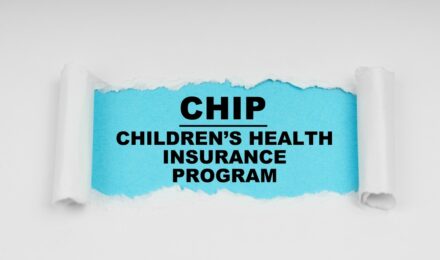Contents
For millions of Americans, Medicaid renewal serves as the foundation of their health care. It provides essential coverage for doctor visits, hospital care, prescriptions, and preventive services at little or no cost. Yet for the first time in decades, many enrollees are facing a new challenge: the nationwide redetermination process.
During the COVID-19 pandemic, states were required to keep people continuously enrolled in Medicaid as part of federal emergency protections. This policy prevented interruptions in care but ended in 2023, when states resumed annual eligibility reviews. Now, in 2025, redeterminations are in full swing.
Families that have never gone through the process before are receiving renewal notices, and millions risk losing coverage not because they are ineligible, but because of paperwork errors, missed deadlines, or outdated contact information. Understanding the process and acting proactively is the best way to safeguard your health coverage during this critical period.
What Is Medicaid Renewal?
Medicaid redetermination, also called renewal or recertification, is the process by which states reassess whether enrollees still meet eligibility requirements. These requirements typically include income limits, household size, disability status, or age categories such as children and seniors. Every enrollee must be reviewed at least once per year, though timelines differ by state.
The process involves submitting updated information to your state’s Medicaid agency. Some individuals are renewed automatically if the state can verify eligibility through existing databases like tax records or SNAP enrollment.
Others receive renewal forms in the mail or electronically and must provide supporting documents, such as pay stubs, proof of residency, or household composition details. Failure to complete these steps can result in loss of coverage, even for people who remain eligible.
Why 2025 Is a Critical Year
As of mid-2025, millions of Medicaid beneficiaries are entering their second or third cycle of renewals since continuous coverage ended. The first wave of redeterminations in 2023 revealed alarming gaps: according to the Centers for Medicare & Medicaid Services, roughly 70 percent of disenrollments occurred for procedural reasons rather than true ineligibility. That means families lost coverage because forms weren’t returned on time, phone numbers were outdated, or documentation was incomplete.
By 2025, states are under pressure to improve these outcomes, but challenges persist. Many households remain unaware of the need to respond to renewal notices, particularly those who enrolled during the pandemic. With summer marking another high-volume renewal period, July is a critical month for outreach and action. Families who ignore or misunderstand the process may find themselves uninsured at a time when medical care is most needed.
Steps to Protect Your Coverage
The best way to avoid coverage loss is to be proactive. Enrollees should start by making sure their contact information is current with their state’s Medicaid office. Many agencies rely heavily on mail to deliver renewal packets, and a missed letter can jeopardize coverage. Checking state Medicaid websites or logging into online portals can confirm whether your information is accurate.
When renewal forms arrive, complete them as soon as possible. Do not wait until the deadline, as processing delays can create gaps in coverage. If additional documentation is requested—such as proof of income, proof of address, or immigration status—gather it quickly and send it through the channels specified. Submitting documents electronically, if available, can reduce the risk of lost mail.
It is also wise to keep copies of everything submitted. If questions arise or delays occur, having a record of your application, receipts, or confirmation numbers will help. For families facing language or technology barriers, community organizations, legal aid groups, and health navigators are available to provide assistance.
Alternatives if You Lose Coverage
Not everyone will remain eligible for Medicaid in 2025. Some may have income that now exceeds state limits, while others may age out of child-focused eligibility categories. Losing Medicaid does not necessarily mean losing health insurance altogether.
The Affordable Care Act (ACA) marketplace provides subsidized plans for those who no longer qualify for Medicaid. In many cases, individuals who lose Medicaid are eligible for zero-premium or low-cost marketplace coverage thanks to expanded subsidies under federal law. Importantly, the loss of Medicaid triggers a special enrollment period, meaning individuals can sign up outside the standard open enrollment window.
Children in families that lose Medicaid may still qualify for the Children’s Health Insurance Program (CHIP), which offers low-cost coverage for those with incomes above Medicaid thresholds but still below affordability levels for private insurance. Pregnant women and postpartum mothers may also find extended coverage options through Medicaid or CHIP in many states, as recent policy changes have lengthened postpartum benefits to twelve months.
Common Pitfalls to Avoid
One of the most common reasons people lose coverage is failing to open or respond to mail. Renewal forms may look like routine notices and get overlooked. Others may be thrown away as junk mail. Families should open all correspondence from their state Medicaid office immediately.
Another pitfall is missing deadlines. Even if you are still eligible, failing to return paperwork by the specified date can result in termination. Reinstating coverage later may take weeks, during which you may be uninsured.
Finally, some enrollees mistakenly assume that eligibility is permanent. Because pandemic-era rules suspended redeterminations for over three years, many households have never gone through the process. Understanding that Medicaid coverage is conditional and must be actively maintained each year is crucial to staying insured.
The Role of Community Support
Community organizations play a vital role in preventing coverage loss. Nonprofits, clinics, and legal aid groups are helping families navigate the complex renewal process by offering language translation, document scanning, and reminders about deadlines.
States are also expanding outreach through text message alerts, robocalls, and social media campaigns. However, the most effective strategy remains direct engagement: individuals and families must take the initiative to confirm their status, respond to notices, and seek help when needed.
Reliable Resources for Enrollees
For those uncertain about their renewal, several resources provide guidance. The official Medicaid.gov site offers a state-by-state directory with renewal instructions and contact information.
Healthcare.gov details marketplace options for those transitioning from Medicaid, including information on subsidies and special enrollment periods. Local community health centers, many funded by the Health Resources and Services Administration (HRSA), also provide in-person assistance for families facing difficulties with redetermination paperwork.
Conclusion
Medicaid redeterminations are more than bureaucratic paperwork—they determine whether millions of Americans maintain access to essential medical care. In 2025, as states continue the renewal wave, the risk of losing coverage due to procedural errors remains high.
By updating contact information, responding promptly to renewal forms, seeking help when needed, and exploring alternatives like CHIP or marketplace plans, families can protect themselves from unnecessary gaps in health insurance. With proactive action and community support, Medicaid can continue to serve as the safety net it was designed to be, ensuring that vulnerable populations receive the care they need throughout the year.
References
1. Medicaid and CHIP Enrollment Data and Renewal Updates, 2024. (Centers for Medicare & Medicaid Services)
2. How to Renew Your Medicaid or CHIP Coverage. (Medicaid.gov)
3. Marketplace Coverage Options After Medicaid Loss. (Healthcare.gov)
Contents
For millions of Americans, Medicaid renewal serves as the foundation of their health care. It provides essential coverage for doctor visits, hospital care, prescriptions, and preventive services at little or no cost. Yet for the first time in decades, many enrollees are facing a new challenge: the nationwide redetermination process.
During the COVID-19 pandemic, states were required to keep people continuously enrolled in Medicaid as part of federal emergency protections. This policy prevented interruptions in care but ended in 2023, when states resumed annual eligibility reviews. Now, in 2025, redeterminations are in full swing.
Families that have never gone through the process before are receiving renewal notices, and millions risk losing coverage not because they are ineligible, but because of paperwork errors, missed deadlines, or outdated contact information. Understanding the process and acting proactively is the best way to safeguard your health coverage during this critical period.
What Is Medicaid Renewal?
Medicaid redetermination, also called renewal or recertification, is the process by which states reassess whether enrollees still meet eligibility requirements. These requirements typically include income limits, household size, disability status, or age categories such as children and seniors. Every enrollee must be reviewed at least once per year, though timelines differ by state.
The process involves submitting updated information to your state’s Medicaid agency. Some individuals are renewed automatically if the state can verify eligibility through existing databases like tax records or SNAP enrollment.
Others receive renewal forms in the mail or electronically and must provide supporting documents, such as pay stubs, proof of residency, or household composition details. Failure to complete these steps can result in loss of coverage, even for people who remain eligible.
Why 2025 Is a Critical Year
As of mid-2025, millions of Medicaid beneficiaries are entering their second or third cycle of renewals since continuous coverage ended. The first wave of redeterminations in 2023 revealed alarming gaps: according to the Centers for Medicare & Medicaid Services, roughly 70 percent of disenrollments occurred for procedural reasons rather than true ineligibility. That means families lost coverage because forms weren’t returned on time, phone numbers were outdated, or documentation was incomplete.
By 2025, states are under pressure to improve these outcomes, but challenges persist. Many households remain unaware of the need to respond to renewal notices, particularly those who enrolled during the pandemic. With summer marking another high-volume renewal period, July is a critical month for outreach and action. Families who ignore or misunderstand the process may find themselves uninsured at a time when medical care is most needed.
Steps to Protect Your Coverage
The best way to avoid coverage loss is to be proactive. Enrollees should start by making sure their contact information is current with their state’s Medicaid office. Many agencies rely heavily on mail to deliver renewal packets, and a missed letter can jeopardize coverage. Checking state Medicaid websites or logging into online portals can confirm whether your information is accurate.
When renewal forms arrive, complete them as soon as possible. Do not wait until the deadline, as processing delays can create gaps in coverage. If additional documentation is requested—such as proof of income, proof of address, or immigration status—gather it quickly and send it through the channels specified. Submitting documents electronically, if available, can reduce the risk of lost mail.
It is also wise to keep copies of everything submitted. If questions arise or delays occur, having a record of your application, receipts, or confirmation numbers will help. For families facing language or technology barriers, community organizations, legal aid groups, and health navigators are available to provide assistance.
Alternatives if You Lose Coverage
Not everyone will remain eligible for Medicaid in 2025. Some may have income that now exceeds state limits, while others may age out of child-focused eligibility categories. Losing Medicaid does not necessarily mean losing health insurance altogether.
The Affordable Care Act (ACA) marketplace provides subsidized plans for those who no longer qualify for Medicaid. In many cases, individuals who lose Medicaid are eligible for zero-premium or low-cost marketplace coverage thanks to expanded subsidies under federal law. Importantly, the loss of Medicaid triggers a special enrollment period, meaning individuals can sign up outside the standard open enrollment window.
Children in families that lose Medicaid may still qualify for the Children’s Health Insurance Program (CHIP), which offers low-cost coverage for those with incomes above Medicaid thresholds but still below affordability levels for private insurance. Pregnant women and postpartum mothers may also find extended coverage options through Medicaid or CHIP in many states, as recent policy changes have lengthened postpartum benefits to twelve months.
Common Pitfalls to Avoid
One of the most common reasons people lose coverage is failing to open or respond to mail. Renewal forms may look like routine notices and get overlooked. Others may be thrown away as junk mail. Families should open all correspondence from their state Medicaid office immediately.
Another pitfall is missing deadlines. Even if you are still eligible, failing to return paperwork by the specified date can result in termination. Reinstating coverage later may take weeks, during which you may be uninsured.
Finally, some enrollees mistakenly assume that eligibility is permanent. Because pandemic-era rules suspended redeterminations for over three years, many households have never gone through the process. Understanding that Medicaid coverage is conditional and must be actively maintained each year is crucial to staying insured.
The Role of Community Support
Community organizations play a vital role in preventing coverage loss. Nonprofits, clinics, and legal aid groups are helping families navigate the complex renewal process by offering language translation, document scanning, and reminders about deadlines.
States are also expanding outreach through text message alerts, robocalls, and social media campaigns. However, the most effective strategy remains direct engagement: individuals and families must take the initiative to confirm their status, respond to notices, and seek help when needed.
Reliable Resources for Enrollees
For those uncertain about their renewal, several resources provide guidance. The official Medicaid.gov site offers a state-by-state directory with renewal instructions and contact information.
Healthcare.gov details marketplace options for those transitioning from Medicaid, including information on subsidies and special enrollment periods. Local community health centers, many funded by the Health Resources and Services Administration (HRSA), also provide in-person assistance for families facing difficulties with redetermination paperwork.
Conclusion
Medicaid redeterminations are more than bureaucratic paperwork—they determine whether millions of Americans maintain access to essential medical care. In 2025, as states continue the renewal wave, the risk of losing coverage due to procedural errors remains high.
By updating contact information, responding promptly to renewal forms, seeking help when needed, and exploring alternatives like CHIP or marketplace plans, families can protect themselves from unnecessary gaps in health insurance. With proactive action and community support, Medicaid can continue to serve as the safety net it was designed to be, ensuring that vulnerable populations receive the care they need throughout the year.
References
1. Medicaid and CHIP Enrollment Data and Renewal Updates, 2024. (Centers for Medicare & Medicaid Services)
2. How to Renew Your Medicaid or CHIP Coverage. (Medicaid.gov)
3. Marketplace Coverage Options After Medicaid Loss. (Healthcare.gov)






